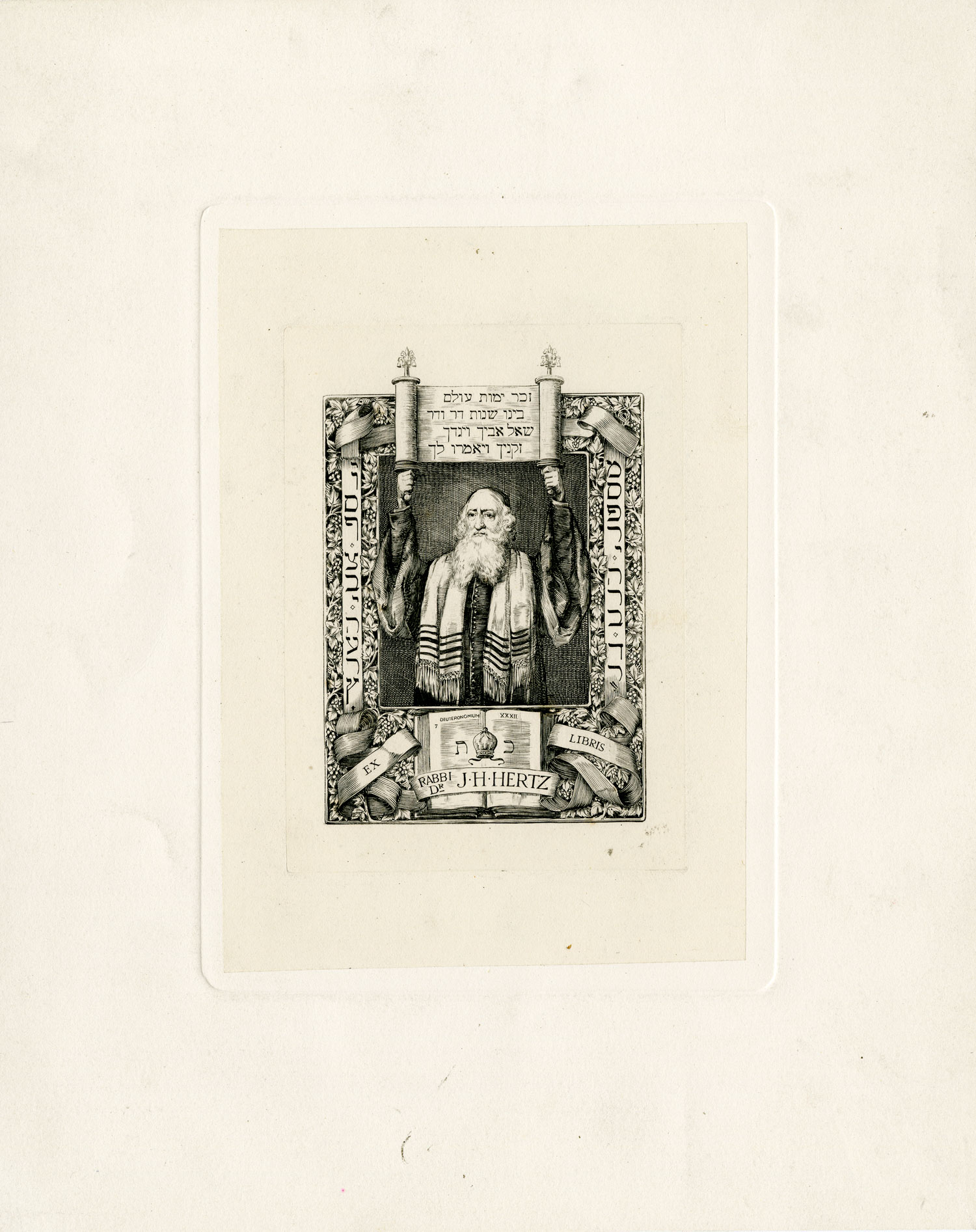This bookplate was used in the library of Rabbi Joseph Herman Hertz (1872–1946), Chief Rabbi of the United Kingdom from 1913 until his death. Rabbi Hertz led British Jews during half a century of crises including both world wars and the Holocaust. The elaborately decorated bookplate is filled with symbolism reflecting Hertz’s identity as a rabbi, his connection with biblical history, and the history of the Jewish people. It features an illustration of hagbah, the elevation of the Torah scroll at a critical moment in the Torah service, a gesture that evokes the Prophet Ezra who “opened the book in the sight of all the people” (Nehemiah 8:5). The Torah scroll is open to a passage from Deuteronomy 32:7: “Remember the days of old, consider the years of many generations; ask thy father, and he will declare unto thee, thine elders, and they will tell thee.” Across the open book at the bottom of the plate are the Hebrew letters for the phrase “keter Torah” (Torah crown). Below this is the inscription “Rabbi Dr. J. H. Hertz.” The rabbi’s name in Hebrew is also written from top to bottom on the left.
Hertz was an internationally-known rabbi who held pulpits in several countries during his career. Born in Rebrény, Hungary (now Slovakia), he moved to New York City in 1884, where he studied at New York City College and Columbia University. He graduated from the Jewish Theological Seminary of America in 1894, and served as rabbi in Syracuse, New York. In 1898, he moved to the Witwatersrand Old Hebrew Congregation in Johannesburg, South Africa, where he stayed until 1911, when he returned to the United States. Two years later he was appointed Chief Rabbi of the United Kingdom. Hertz’s challenges and achievement as Chief Rabbi were many, and he remains one of the most accomplished religious leaders in British history.
